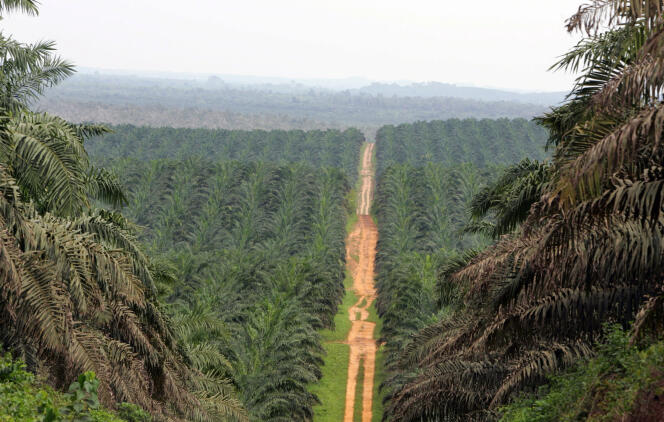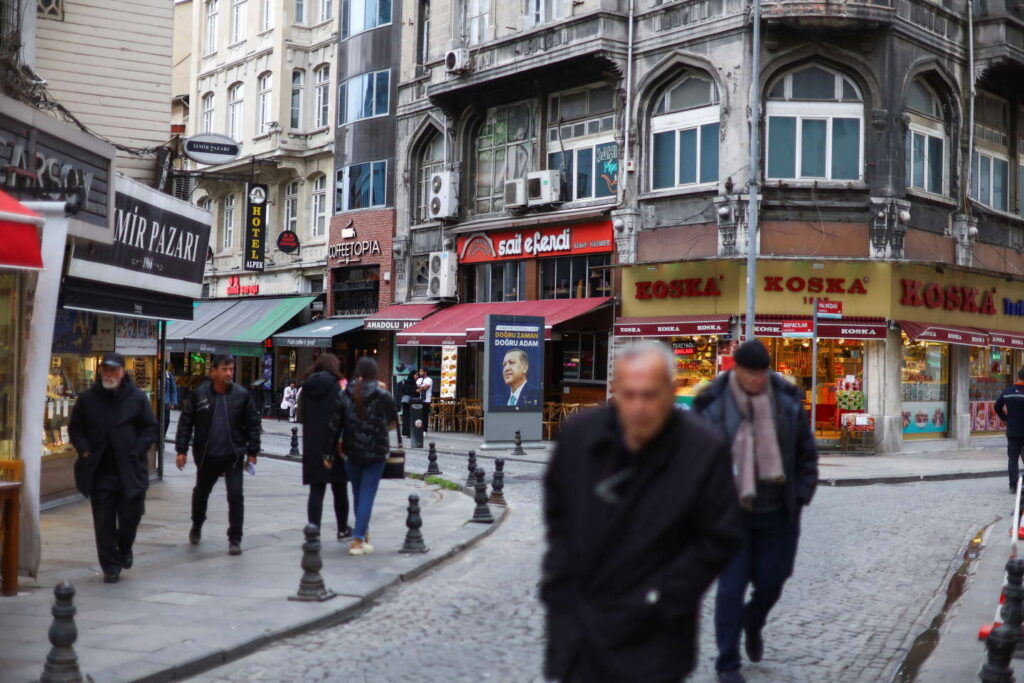
The harvester brandishes his long scythe more than four meters high, then, with a sharp and precise blow, detaches an enormous branch which collapses on the ground. To recover the bunches of the oil palm, imprisoned at the birth of the branches of the tree, this gesture is repeated thousands of times, every day, across Côte d’Ivoire. In the country, the second African producer of palm oil, the precious red fruits are harvested throughout the year. The branches, on the other hand, accumulate in the plantations by the hundreds of thousands of tonnes, with no real use other than to be slowly transformed into compost. At least until now.
The Toumanguié region, a two-hour drive east of Abidjan, is one of the Ivorian palm basins, whose cultivation extends over the entire southern strip of the country. Here, the trunk of the branches, called the petiole, will become the fuel for a biomass power plant currently under construction, whose start-up is scheduled for November 2025. The largest plant of this type in West Africa, it should supply 46 megawatts (MW) to the network, equivalent to the consumption of 1.7 million people, in a country where 30% of the population does not have access to electricity, according to the World Bank. An investment of some 237 million euros carried by the project partners (the French EDF and Meridiam, the Ivorian Sifca) and lenders (Proparco, Emerging Africa Infrastructure Fund).
The advantage of biomass electricity (produced by combustion of organic waste, whatever it may be) is that it is not only renewable but also called “basic”, unlike solar or wind power, which are intermittent. “It is one of the rare renewable energies that can be controlled. You can decide to produce or not to produce, but the plant is supposed to operate 24 hours a day, seven days a week”explains Raphael Ruat, director of Biovea, the project company that is building this infrastructure.
Another advantage, he insists: the creation of 1,000 jobs, during twenty-five years of operation. Low-skilled employees, hired locally, who will in particular ensure the collection of petioles within a radius of 60 km. “You are making an impact in a local area, far from Abidjan and the economic heart of the country”, adds Mr. Ruat.
Fight against poverty
Sifca, the Ivorian leader in the cultivation and production of palm oil, will supply around 25% of petiole volumes thanks to the huge industrial plantation of its Palmci subsidiary in Toumanguié. But the remaining 75% must come from 12,000 small growers in the surrounding area, with whom Palmci is already working to source the bunches.
“When we say “small planters”, we are talking about areas of five hectares on average. In terms of the fight against poverty, this will bring a plus to these communities,” details Raymond Tagouya, agricultural director of the village plantations of Palmci. Farmers should increase their income “from 10 to 15%” by giving away these pieces of wood. “For these small planters, there is really no extra work, it’s just a machete, so really an additional income”, underlines the Ivorian agronomist, adding that the ashes resulting from the combustion will be returned to them in the form of fertilizer.
Often criticized for its role in deforestation – especially in Asia – the palm tree originates from the Gulf of Guinea and its oil is extremely popular in West African cuisines. It is one of the most important crops in Côte d’Ivoire: in the Toumanguié region alone, its uniform plantations sometimes stretch as far as the eye can see. The potential for electricity production is therefore significant: Biovea has identified “five or six other sites, for a total capacity of 200 MW “. Discussions, the company says, are ongoing with authorities.
In this tropical country with a very agricultural economy (20% of GDP, 45% of jobs), the resource is exponential, just like in many of its neighbours, such as Ghana or Nigeria. Cocoa pods (of which Côte d’Ivoire is the world’s leading producer), rubber tree trunks (which produce rubber), cashew nut shells, cotton stalks: the Ivorian authorities estimate between 15 and 17 million tonnes per annual production of agricultural waste. “ There’s a lot of diversity.” confirms Norbert N’Goran, consultant and former executive of the Ministry of Energy, stressing that the authorities have estimated the total potential of biomass electricity at around 1,000 MW.
Bioenergy, biogas, biofertilizers…
A considerable figure compared to the 2,300 MW of the country’s current production capacity, today 75% provided by gas, a fossil fuel that the country exploits off its coasts. “Côte d’Ivoire has a fairly well-structured electricity sector but is very behind in the greening of its energy mix”, notes Mathieu Peller, Deputy CEO of Meridiam, a major infrastructure developer in Africa and shareholder of Biovea. Abidjan is committed under the Paris agreement to achieving 42% renewable energy by 2030. “ The challenge is to no longer be dependent on a fossil resource that is at the same time limited, expensive or in any case whose price is unpredictable, and bad for the environment”, adds Mr. Peller.
Faced with this observation, what is stuck? The Biovea project, started in 2010, took fifteen years to enter into service. First of all, it was necessary to set up a regulatory framework, carry out feasibility studies, negotiate a first power purchase agreement with the State… So many tedious but essential steps for this embryonic sector. Then, the price per kilowatt hour (62 CFA francs for Biovea) remains higher than for gas (about 50 CFA francs). Finally, even if they are abundant, agricultural waste is a complex resource: sometimes seasonal, as for cocoa, sometimes very diffuse throughout the territory, which increases transport costs and the logistical headache. Some materials tend to rot, which complicates their management, and they do not all have the same energy efficiency.
Newsletter
“The Africa World”
Every Saturday, find a week of news and debates, by the editorial staff of “Monde Afrique”
Register
However, projects are beginning to see the light of day. In a 2018 report on the progress of their climate objectives, the Ivorian authorities – who did not respond to our requests – cited in particular a project using cocoa pods (20 MW) and another cotton residues (25 MW), the latter located in Boundiali (north), in a very rural and poor region. “But it’s not just electrical recovery. There can be recovery in bioenergy, biogas, biofertilizers,” points out Mr. N’Goran. In July 2022, Abidjan launched a pilot project for the production of 3,000 liters of biodiesel, in partnership with the Swedish bus manufacturer Scania and the French TotalEnergies, using agricultural residues.



